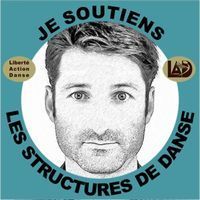Research Interests:
We demonstrate a novel method for producing a synthetic talking head. The method is based on earlier work in which the behaviour of a synthetic individual is generated by reference to a probabilistic model of interactive beha viour within... more
We demonstrate a novel method for producing a synthetic talking head. The method is based on earlier work in which the behaviour of a synthetic individual is generated by reference to a probabilistic model of interactive beha viour within the visual domain - such models are learnt automatically from typical interactions. We extend this work in to a combined visual and auditory domain and employ a state-of-the-art facial appearance model. The result is a real-time synthetic talking head that responds appropriately and with correct timing to simple forms of greeting with variations in facial expression and intonation.
Research Interests:
Statistical learning has become a central theme in computational studies of intelligence, with important but largely independent developments in perceptual tasks like object recognition and in conceptual reasoning (Mitchell, 1997).... more
Statistical learning has become a central theme in computational studies of intelligence, with important but largely independent developments in perceptual tasks like object recognition and in conceptual reasoning (Mitchell, 1997). Typically, the former involves clustering and regression over quantitative representations based on real linear spaces ( ), whereas the latter involves symbolic procedures over qualitative representations that emphasise the relationships between objects (e.g. next-to, occurs-before, overlaps, similar-shape). Integrating learning across these two levels of abstraction presents a number of challenges, particularly in relating quantitative and qualitative representations. We propose a system for integrating standard approaches to perceptual and conceptual learning within the simple domain of table-top games (full details will appear in Needham et al. (2005). Our target scenario is of an intelligent agent being introduced into an unfamiliar environment from w...
Research Interests:
The development of cognitive vision systems that autonomously learn howto interact with their environmentthrough input from sensors is a major chal-lenge for the Computer Vision, Machine Learning and Articial Intelligencecommunities. This... more
The development of cognitive vision systems that autonomously learn howto interact with their environmentthrough input from sensors is a major chal-lenge for the Computer Vision, Machine Learning and Articial Intelligencecommunities. This paper presents a framework in which a symbolic infer-ence engine is integrated with a perceptual system. The rules of the inferenceengine are learned from audio-visual observation of the world, to form an in-teractive perceptual agent that can respond suitably to its environment. Fromthe video and audio input streams interesting objects are identied using anattention mechanism. Unsupervised clustering of the objects into perceptualcategories generates a symbolic data stream. Inductive Logic Programmingis then used to generalise rules from this symbolic data. Although in princi-ple the framework could be applicable to a wide range of domains (perhapsof most interest to the automatic programming of robots), it is demonstratedhere in simple game playi...
Research Interests:
Research Interests:
Research Interests:
This paper presents a cognitive vision system capable of autonomously learning protocols from perceptual observations of dynamic scenes. The work is motivated by the aim of creating a synthetic agent that can observe a scene containing... more
This paper presents a cognitive vision system capable of autonomously learning protocols from perceptual observations of dynamic scenes. The work is motivated by the aim of creating a synthetic agent that can observe a scene containing interactions between unknown objects and agents, and learn models of these sufficient to act in accordance with the implicit protocols present in the scene. Discrete concepts (utterances and object properties), and temporal protocols involving these concepts, are learned in an unsupervised manner from continuous sensor input alone. Crucial to this learning process are methods for spatio-temporal attention applied to the audio and visual sensor data. These identify subsets of the sensor data relating to discrete concepts. Clustering within continuous feature spaces is used to learn object property and utterance models from processed sensor data, forming a symbolic description. The PROGOL Inductive Logic Programming system is subsequently used to learn ...
Research Interests:
... 7. CONLUSION ET PERSPECTIVES Nous avons proposé une architecture et implémenté un système qui rend possible l'intégration de technologies de localisation à différents niveaux d ... [5] Want R. et al., "The... more
... 7. CONLUSION ET PERSPECTIVES Nous avons proposé une architecture et implémenté un système qui rend possible l'intégration de technologies de localisation à différents niveaux d ... [5] Want R. et al., "The active Badge Location system", ACM Trans Info Systems, Jan 1992 ...
Research Interests:
Research Interests:
Research Interests:
Research Interests:
Research Interests:
... 7. CONLUSION ET PERSPECTIVES Nous avons proposé une architecture et implémenté un système qui rend possible l'intégration de technologies de localisation à différents niveaux d ... [5] Want R. et al., "The... more
... 7. CONLUSION ET PERSPECTIVES Nous avons proposé une architecture et implémenté un système qui rend possible l'intégration de technologies de localisation à différents niveaux d ... [5] Want R. et al., "The active Badge Location system", ACM Trans Info Systems, Jan 1992 ...
